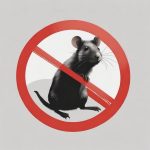Airguns are ideally suited for pest control in urban and rural environments. However, selecting the right airgun for the job can be tricky. Given the utility of pest control, folks often see their purchase as a one-off “need to deal with those darn armadillos” purchase vs. something they are going to be using recreationally. So for those of you who are looking for a pest control utility airgun, this article is for you.
Budget
Given we are looking at a utility purchase, budget is going to be a key factor, but it shouldn’t be your only factor. You need whatever you purchase to get the job done efficiently and ethically. Budget will often be determined by the type of pest you are looking to eliminate. Inexpensive pump pneumatic airguns like the Crosman Pumpmaster 760 can easily dispatch smaller pests like mice and rats. Where larger pests, like squirrels and rabbits, would need more power, range, and accuracy delivered by modern break barrel air rifles. Even larger pests like woodchucks and armadillos may require larger-caliber PCP airguns. It’s all about picking the right tool for the job.
Powerplant
For most situations, you’ll be selecting from three different powerplants: pump pneumatic, spring, and PCP. Pump pneumatic airguns require you to pump them up between each shot manually. They are generally lower powered but are very easy to shoot and affordable. As mentioned above, if you have mice or rats inside 15 yards, this may be the perfect way to go.
Spring guns deliver a lot of power with minimal effort. They use either a traditional metal spring or a gas piston to drive the pellet down the barrel. Airguns like the .22 caliber Gamo Swarm Bone Collector Gen 3i can deliver over 20 foot-pounds of energy, more than enough for small game like rabbits and squirrels. Given the unique reverse recoil generated by the internal piston hitting the front of the compression chamber, spring guns can be trickier to shoot accurately. An added benefit of the Gamo Swarm line of airguns is the 10-shot auto-loading system. Rather than having to manually load a pellet between each shot, the SWARM system uses a 10-shot magazine which loads the next pellet during the normal cocking cycle. It makes quick follow-up shots super easy.
PCP airguns deliver more power than spring guns with the shooting ease of pump pneumatics. They store a volume of pressurized air onboard, allowing multiple shots between fills. PCP airguns come in all calibers and price points. A good utility PCP for pesting out to 35 yards may be something as simple as the .22 caliber Gamo Arrow. At well under $250, this airgun delivers better than 1” groups out to 35 yards. For more power, you may want to consider the .25 caliber JTS Airacuda (under $350), which can take even larger pests like raccoons, possums, and armadillos.
If you decide to choose a PCP airgun for pesting, make sure that you plan a reliable way to fill it. Most operate at 3000+ PSI, and while you can use a specialized hand pump like the Air Venturi MKV, you may prefer a personal compressor like the RovAir 4500, as hand pumping takes a lot of effort.
Energy
We’ve touched a bit on energy already, but let’s go a little deeper. First off, all our energy recommendations assume proper shot placement. If you can’t hit your target, you shouldn’t be using airguns for pesting.
Energy is different from velocity. Most airguns are marketed based on FPS (feet per second), which gives velocity but says nothing about energy. To determine the energy of an airgun, you need to combine the velocity with the weight of the projectile to calculate energy. Here is a great article on the subject: What is Muzzle Energy. There’s also an easy calculator. Since most manufacturers don’t disclose what projectile was used to get their “up to” FPS numbers, you’ll need to do some research.
Here is our basic guideline for pesting and energy requirements. These suggestions are not absolutes but rather a baseline to help you pick the right energy for the pests you need to take down.
Mice & Rats – .177 caliber and minimum 5 foot-pounds
Squirrels & Rabbits – .177 caliber and minimum 10 foot-pounds, .22 caliber 15+ foot-pounds optimal
Woodchucks, Raccoons – .22 caliber and 25 foot-pounds, .25 caliber optimal
Armadillo – .25 caliber and 35+ foot-pounds
Coyote – .30 caliber and 120 foot-pounds, .35 caliber optimal
Noise Level
The last parameter we’ll take a look at today is noise level. If you are taking pests in your backyard with neighbors right next to you, you’ll probably want to keep things as quiet as possible. A moderated PCP airgun is going to be ideal. Many are so quiet that you can’t really distinguish the shot from 20 yards away. Other options, like pump pneumatic, are generally not suppressed and can be loud. While many spring guns incorporate sound dampening, there’s no way to mask the loud mechanical slap of the internals. So if quietness is critical, then a moderated PCP like the Benjamin Marauder is going to be ideal.
That’s a Wrap
We’ve covered a lot of information today. Hopefully, you have a better handle on what you’ll need to ethically remove those pesky pests around your property. But if you still have questions and would like some help, please give us a call. We are always happy to help.
